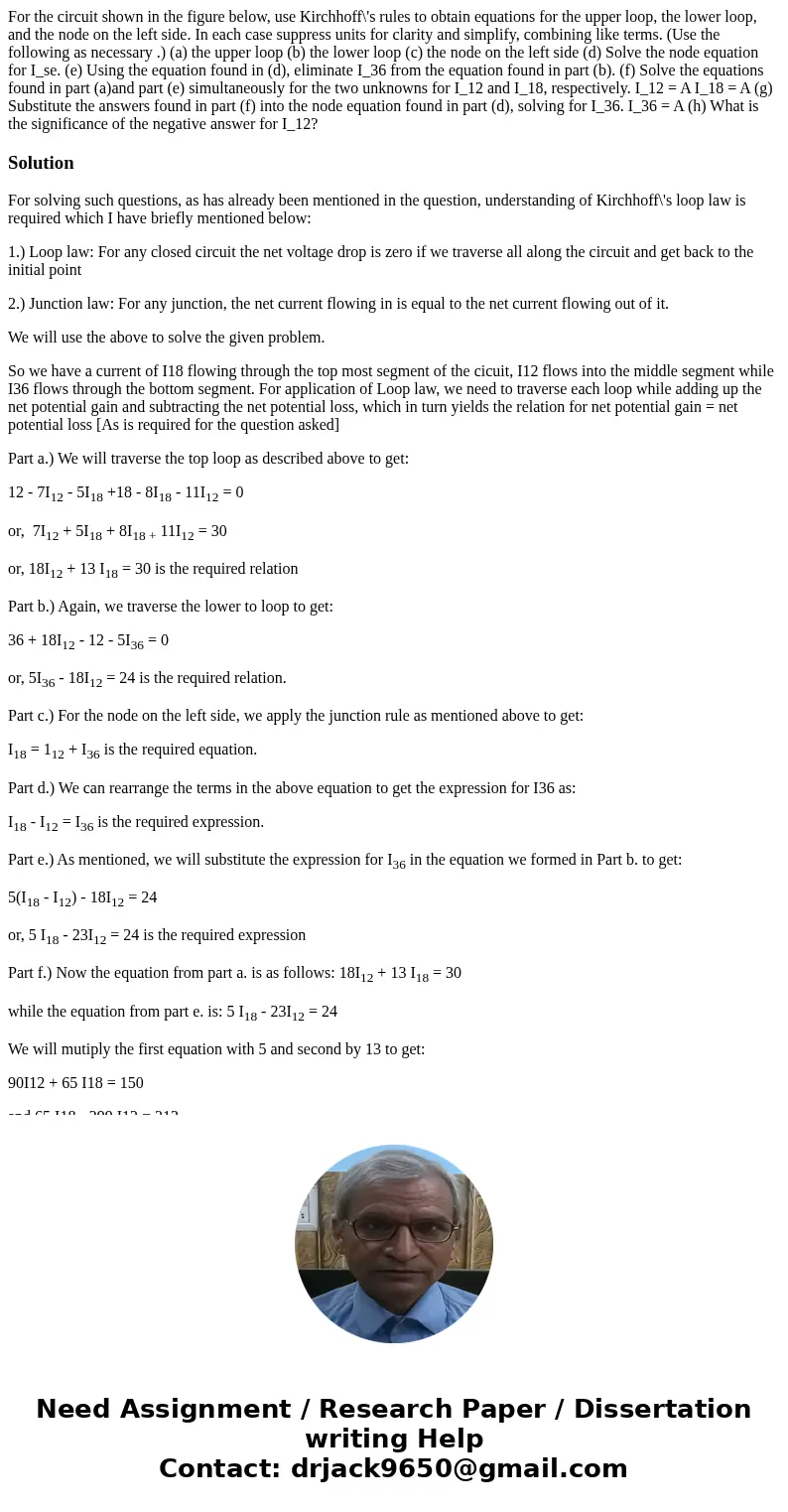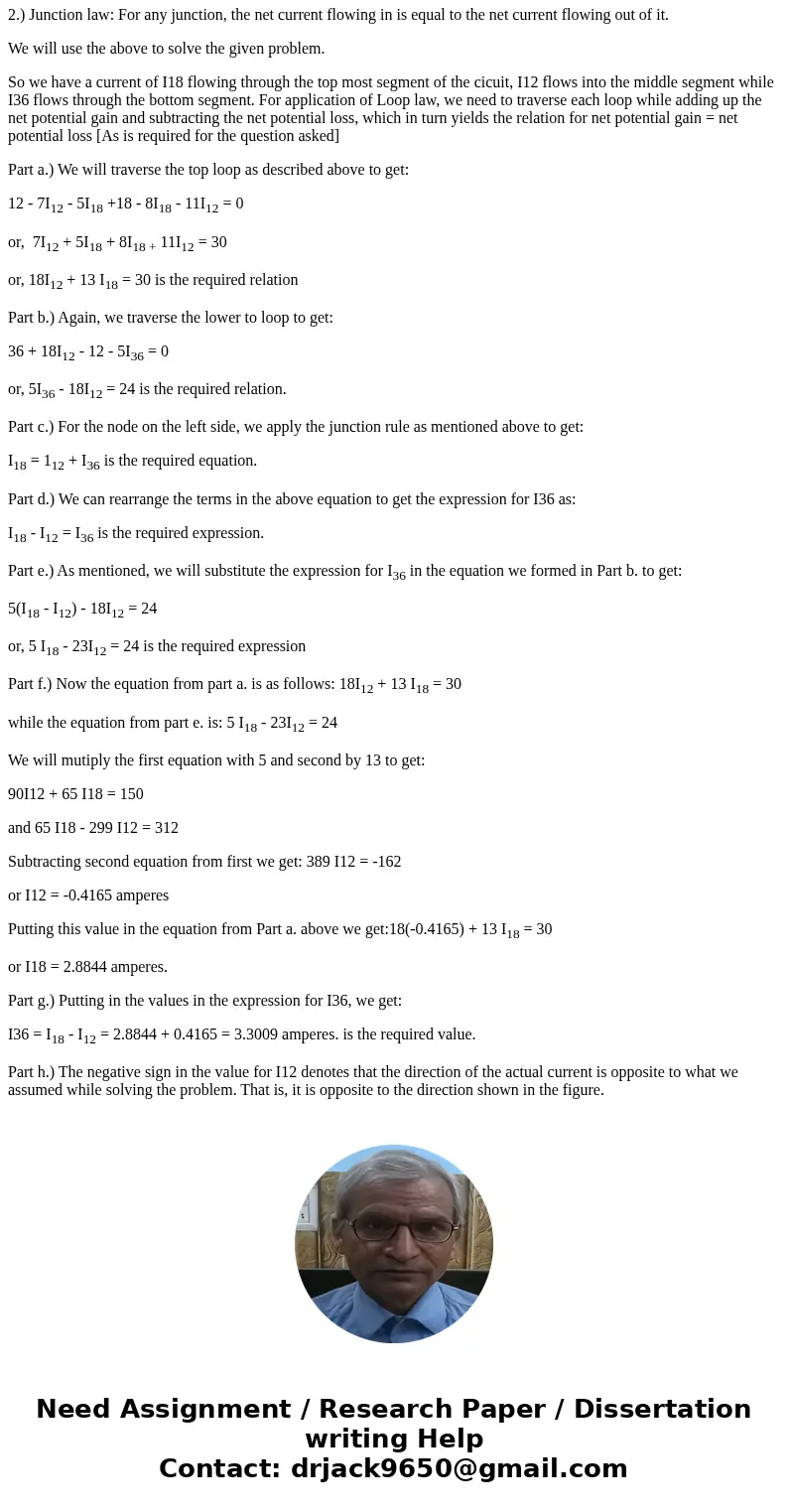For the circuit shown in the figure below use Kirchhoffs rul
Solution
For solving such questions, as has already been mentioned in the question, understanding of Kirchhoff\'s loop law is required which I have briefly mentioned below:
1.) Loop law: For any closed circuit the net voltage drop is zero if we traverse all along the circuit and get back to the initial point
2.) Junction law: For any junction, the net current flowing in is equal to the net current flowing out of it.
We will use the above to solve the given problem.
So we have a current of I18 flowing through the top most segment of the cicuit, I12 flows into the middle segment while I36 flows through the bottom segment. For application of Loop law, we need to traverse each loop while adding up the net potential gain and subtracting the net potential loss, which in turn yields the relation for net potential gain = net potential loss [As is required for the question asked]
Part a.) We will traverse the top loop as described above to get:
12 - 7I12 - 5I18 +18 - 8I18 - 11I12 = 0
or, 7I12 + 5I18 + 8I18 + 11I12 = 30
or, 18I12 + 13 I18 = 30 is the required relation
Part b.) Again, we traverse the lower to loop to get:
36 + 18I12 - 12 - 5I36 = 0
or, 5I36 - 18I12 = 24 is the required relation.
Part c.) For the node on the left side, we apply the junction rule as mentioned above to get:
I18 = 112 + I36 is the required equation.
Part d.) We can rearrange the terms in the above equation to get the expression for I36 as:
I18 - I12 = I36 is the required expression.
Part e.) As mentioned, we will substitute the expression for I36 in the equation we formed in Part b. to get:
5(I18 - I12) - 18I12 = 24
or, 5 I18 - 23I12 = 24 is the required expression
Part f.) Now the equation from part a. is as follows: 18I12 + 13 I18 = 30
while the equation from part e. is: 5 I18 - 23I12 = 24
We will mutiply the first equation with 5 and second by 13 to get:
90I12 + 65 I18 = 150
and 65 I18 - 299 I12 = 312
Subtracting second equation from first we get: 389 I12 = -162
or I12 = -0.4165 amperes
Putting this value in the equation from Part a. above we get:18(-0.4165) + 13 I18 = 30
or I18 = 2.8844 amperes.
Part g.) Putting in the values in the expression for I36, we get:
I36 = I18 - I12 = 2.8844 + 0.4165 = 3.3009 amperes. is the required value.
Part h.) The negative sign in the value for I12 denotes that the direction of the actual current is opposite to what we assumed while solving the problem. That is, it is opposite to the direction shown in the figure.


 Homework Sourse
Homework Sourse